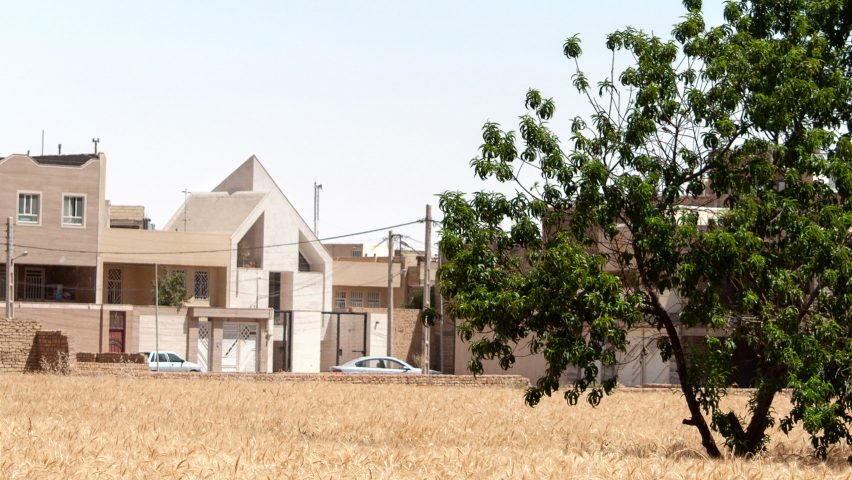This residential building containing two apartments, in the Iranian city of Yazd, has an angular form influenced by vernacular cottages.
Amir Shahrad of Tehran-based AWE Office oversaw the design of the Yazd Urban Villa, which is located in the city's densely populated Koocheh Biuk neighbourhood.
Koocheh Biuk is a relatively poor area that lacks a defining architectural identity, so Shahrad and his team wanted to introduce a building with integrity that enhances its context.
The property contains a pair of apartments arranged over two floors that look out towards a nearby wheat field.
This remnant of the area's agricultural past, which is unusual in the increasingly built-up neighbourhood, informed a design that seeks to recall traditional rural cottages.
"The rustic background of the site has been specified by the instantly recognisable hipped roof," explained the architects, "in contrast to almost all of the other nearby buildings which have stuck in their dense blocks."
The building comprises a series of geometric volumes that express the arrangement of its internal and external spaces.
On the upper storey, the mass is interrupted by a crack that separates the living areas from a stairwell. This aperture also accommodates planting that is visible from the street.
In addition to the gap between the rooflines, the facade is broken up by windows and voids that allow natural light and air to enter the interior spaces. Each portion of the facade is also staggered to further articulate the composition of the various rooms.
The ground floor accommodates a covered two-car parking area set back from the street. An entrance on the opposite side leads into the shared circulation space, with stairs leading down to one apartment and up to the other.
The first-floor apartment features a double-height living space with a steeply sloped ceiling clad in warm timber that extends onto one wall.
The end wall incorporates windows and a glazed door that opens onto a compact private terrace hidden from the street by a protruding section of the facade.
The building's structure is a composition of reinforced concrete and steel, which is clad in stone panels with a light hue that helps to prevent unwanted solar absorption.
AWE Office works on projects of varying scales across Iran, and previously completed an office building in Tehran featuring a stone-clad facade interrupted by faceted openings and wooden louvres. Since the lifting of economic sanctions on Iran architecture is booming in the country with a new crop of architects creating houses, offices and bridges.
Photography is by Mohammad Ghavamedini.

